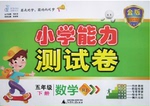题目内容
The universities are schools of education and research but the main reason for their existence is not in the knowledge taught to the students or in the opportunities for the economic or social ___50___ resulting from the research findings.
The true function of a university is that it keeps the ___51___ between knowledge and the real life. It unites the students with ordinary life in a ___52___ way. The university passes on information, but it ___53___ the information imaginatively. Imagination is the driving force for the society’s future development. Students’ imagination is the very ___54___ every university should protect and encourage. A university which ___55___ to do so has no reason for existence. With imagination, knowledge is not only knowledge: it includes all possibilities. It’s no longer a ___56___ on students’ memory. It’s food for thought and ___57___ for creative inventions.
Imagination is not ___58___ knowledge. Instead, it is a way leading to more knowledge. It works by thoroughly studying the current knowledge and then exploring every possibility about the knowledge. In the exploration, new knowledge ___59___. Imagination enables men to construct a new vision of the world and it adds ___60___ to life through endless possibilities. Imaginative people are restless all along.
Youth is imaginative and if the university can help preserve this precious wealth, the power of imagination can ___61___ change the world. Besides, it should also be made clear that imagination won’t be most effective without necessary experience. The problem of the current world is that those who are imaginative have only little experience ___62___ those who are experienced have weak imaginations. The ___63___ left for the universities is to hold together these two factors for the whole human race to ___64___ greater development and happiness.
1. A.problem B.development C.life D.inquiry
2. A.connection B.attraction C.difference D.tradition
3. A.technical B.difficult C.creative D.basic
4. A.supposes B.conveys C.expects D.weighs
5. A.spirit B.goods C.message D.theory
6. A.tries B.pretends C.fails D.means
7. A.burden B.treasure C.schedule D.science
8. A.result B.material C.cost D.figure
9. A.superior to B.familiar with C.separate from D.strict with
10. A.takes shape B.steps in C.sets off D.speeds up
11. A.proof B.excitement C.greed D.seed
12. A.temporarily B.carefully C.reluctantly D.finally
13. A.because B.unless C.while D.until
14. A.sympathy B.solution C.condition D.purpose
15. A.require B.fix C.imagine D.achieve
1.B
2.A
3.C
4.B
5.A
6.C
7.A
8.B
9.C
10.A
11.B
12.D
13.C
14.B
15.D
【解析】
试题分析:文章阐明大学存在的理由在于激发鼓励学生的想象力,以及要把想象力和经验很好的结合。
1.考查名词:A. problem问题B. development发展C. life生活 D. inquiry询问,句意:大学存在的理由不是在由研究发现带来的经济或社会发展。选B
2.考查名词:A. connection联系B. attraction吸引C. difference不同D. tradition传统,大学的真正的功能是保持知识和现实生活的联系。选A
3.考查形容词:A. technical技术的B. difficult困难的C. creative有创造力的D. basic基础的,它是用有创造力的方式把普通的学生练习起来。选C
4.考查动词:A. supposes猜想B. conveys传达C. expects期望 D. weighs重量,大学是传达信息的,但是它是通过想象力的方式来传达信息的,选B
5.考查名词:A. spirit精神B. goods商品C. message信息D. theory理论,学生的想象力是每个大学都要保护鼓励的精神。选A
6.考查动词:A. tries尝试B. pretends假装C. fails失败D. means意味着,不能做到这一点的大学就没有存在的理由。选C
7.考查名词:A. burden负担B. treasure财宝C. schedule安排表D. science科学,有了想象力,知识就不是负担,选A
8.考查名词:A. result结果B. material材料C. cost花费D. figure数字,它是思想的食物,创造性发明的材料。选B
9.考查词组:A. superior to高于B. familiar with熟悉C. separate from和…分开D. strict with严格,从后面的句子:Instead, it is a way leading to more knowledge.可知想象力和知识不是分开的,选C
10.考查词组:A. takes shape形成B. steps in踏进C. sets off出发D. speeds up加速,在探索中新的知识形成。选A
11.考查名词:A. proof证据B. excitement兴奋C. greed贪婪D. seed种子,通过无尽的可能给人生增加兴奋。选B
12.考查副词:A. temporarily暂时B. carefully仔细C. reluctantly自愿D. finally最终,想象力会最终改变世界。选D
13.考查连词:A. because因为B. unless除非C. while然而D. until直到,有想象力的人经验很少,有经验的人想象力很差。选C
14.考查名词:A. sympathy同情B. solution解决方法C. condition条件D. purpose目的,大学的解决办法是把这两个因素结合起来。选B
15.考查动词:A. require要求B. fix固定 C. imagine想象D. achieve取得,达到,使人类得到更多的发展和快乐。选D
考点:考查教育类短文
点评:本文主要是测试学生综合运用语言的能力,即从语篇的角度综合测试阅读理解能力、词汇的掌握和对英语习惯用语的熟悉程度、以及语法规则的灵活运用。句子较长,考查学生长难句的理解。考生做题时必须时刻从上下文考虑,不应该只看到所添的词在短语或句子内是否可行。因此,在做题时最好将全文通读一下,了解了全文的意思以后再作答。

 期末100分闯关海淀考王系列答案
期末100分闯关海淀考王系列答案 小学能力测试卷系列答案
小学能力测试卷系列答案
| |||||||||||||||||||||||||||||||||||||||||||||
SEE a cell phone cover that you like on Taobao? Forget about placing an order, paying the bill online and waiting for days for it to be delivered to you. In the near future, you'll be able to get it in minutes just by hitting "print" on your computer.
You might find it hard to believe that you could actually "print" an object like you would a picture. But it is not that hard to understand how it would work. Just as a traditional printer sprays (喷) ink onto paper line by line, modern 3-D printers spread material onto a surface layer by layer, from the bottom to the top, gradually building up a shape.
Instead of ink, the materials the 3-D printer uses are mainly plastic, resin (树脂)and certain metals. The thinner each layer is --- from a millimeter to less than the width of a hair --- the smoother and finer the object will be.
This may sound like a completely new technology, but the truth is that 3-D printing has been around since the late 1980s. Back then, it was barely affordable for most people, so few knew about it.
Last year, though, saw a big change in the 3-D printing industry--- printers became much cheaper. For example, 10 years ago a desktop 3-D printer might have cost £20,000 (200,000 yuan), while now they cost only about £ 1,000, according to the BBC.
Taken out of the factory and introduced to more diverse and common uses, 3-D printing can create just about anything you can think of ---flutes (笛子), bikinis, jewelry, aircraft parts and even human organs. In fact, scientists from Cornell University in New York have just made an artificial ear using a 3-D printer, according to Science Daily. The fake ear looks and acts exactly like a natural one.
However, as 3-D printing becomes more commonplace, it may bring about certain problems --- such as piracy. "Once you can download a coffee maker, or print out a new set of kitchen utensils (餐具) on your personal 3-D printer, who will visit a retail (零售的) store again?" an expert in 3-D printing told Forbes News. Even more frightening, what if anyone in the world could use a 3-D printer to print out a fully functioning gun?
【小题1】According to the article, in the future, the 3-D printing technology will ___.
| A.enable people to make better purchases online |
| B.be applied as widely in our daily lives as computers |
| C.change the way we make many products |
| D.shorten the time it takes for people to get what they buy online |
| A.The 3-D printing technology was taken out ofthe factory. |
| B.The 3-D printer became more affordable forconsumers. |
| C.The 3-D printer was used for medical treatmentfor the first time. |
| D.3-D printing technology began to be used invarious fields. |
| A.By analyzing a cause and an effect. | B.By making comparisons. |
| C.By giving examples. | D.By presenting research findings. |
| A.Printing out everything | B.Technology in the future |
| C.Online shopping disappearing | D.Great demand for 3-D printers |